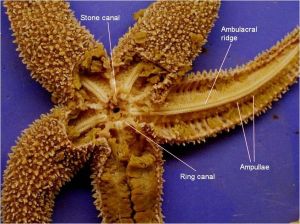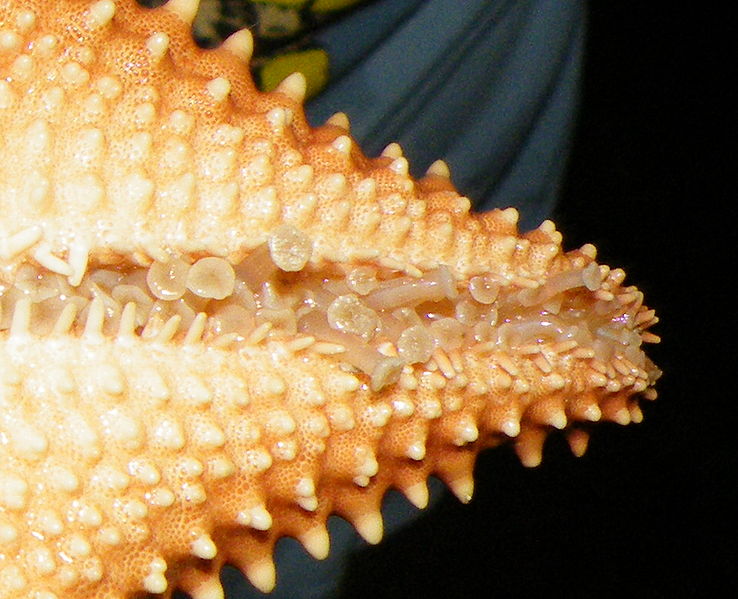 I came across this image of a dissected sea star and had to share it. It does a great job of identifying intricate details of the sea star physiology that are involved with the locomotion and vascular system of the invertebrate.
I came across this image of a dissected sea star and had to share it. It does a great job of identifying intricate details of the sea star physiology that are involved with the locomotion and vascular system of the invertebrate.
The vascular system is part of the circulatory system that helps transport nutrients back and forth across the animal’s body. These echinoderms (a group of marine invertebrates known for bumpy skin and radial symmetry, including sea stars, sea urchins, and sand dollars) begin the movement of their tubed feet with water entering through the madreporite. The madreporite is the wart-like, red or yellow opening in the center of the sea star. It acts like a pressure-equalizing valve. Next, the water will circle  around the stone canal to be distributed to the arms of the sea star. At this point, water goes to the tubed feet and being the act of moving by contracting and stretching. Tubed feet also come in handy when grasping food to place into the mouth of the sea star. For more information and a great image of the madreporite of a sea star click here.
around the stone canal to be distributed to the arms of the sea star. At this point, water goes to the tubed feet and being the act of moving by contracting and stretching. Tubed feet also come in handy when grasping food to place into the mouth of the sea star. For more information and a great image of the madreporite of a sea star click here.
If you have a great question just email info@beachchairscientist.com.
Image (c): top – http://w3.shorecrest.org, bottom – wikipedia.com







What people are saying …